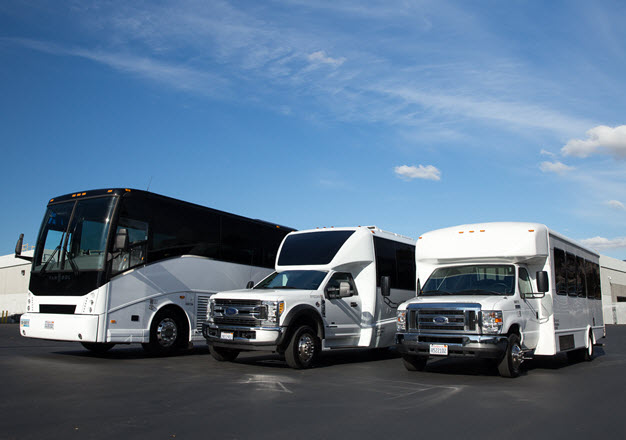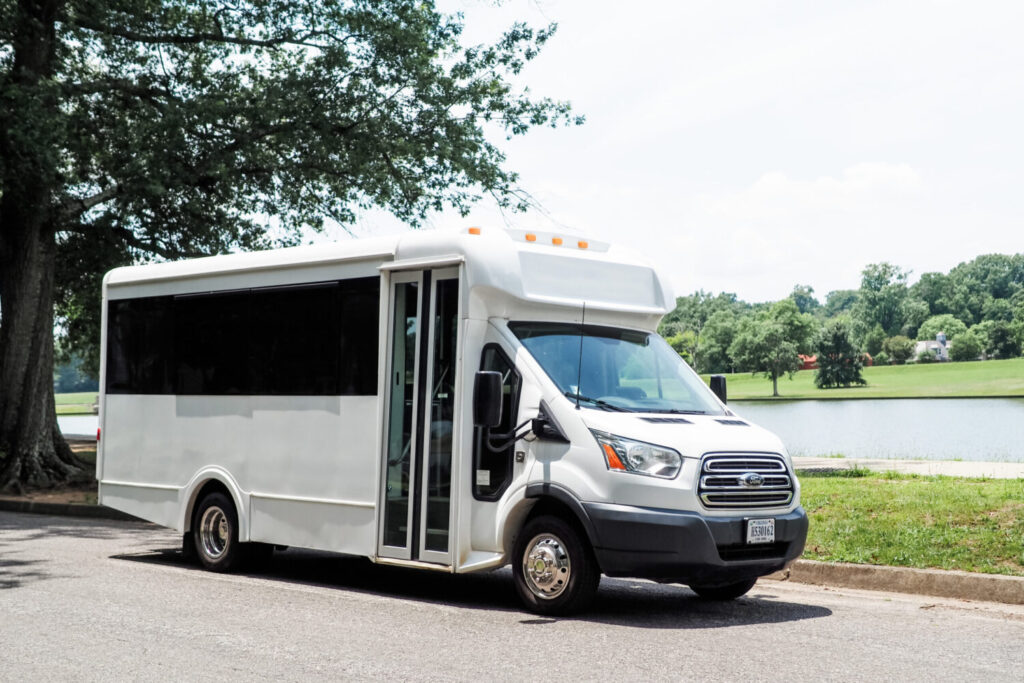20 New Suggestions For Deciding On Event Transportation Sites
20 New Suggestions For Deciding On Event Transportation Sites
Blog Article
The 10 Best Tips For Choosing The Right Size Vehicle And Its Capacity In The Case Of Employee Shuttles
Here are 10 tips to select the ideal vehicle and the right capacity to provide employee shuttle services:
1. Assess Employee Transportation Needs
Begin by looking at your entire employees. Find out the percentage of employees who use the shuttle service frequently. Be aware of factors like the number of employees in your company, the work shifts and the peak times for usage. This information can assist you in selecting the right vehicle capacity, and ensure the shuttles have the capacity to accommodate a variety of passengers.
2. Select the Right Vehicle Type
Based on your shuttle's requirements and the number of employees you have, you may choose a vehicle that are suitable for. You can choose from minibuses and larger buses. Minibuses are ideal for smaller groups as they can fit into tighter areas, while larger buses are more suitable for large groups. If employees travel with bags or luggage, consider the layout of the vehicle and whether it is equipped with comfortable seating.
3. Evaluate Fuel Efficiency
Costs for fuel have a huge influence on the budget of shuttle services. It is important to consider fuel efficient vehicles when selecting vehicles that reduce operating costs. Electric or hybrid vehicles are also worth considering as they can offer long-term savings, while also aligning with the sustainability objectives. The analysis of the efficiency of fuel consumption of different models can aid in making an informed decision that is able to balance capacity and cost-efficiency.
4. Be aware of accessibility features
Make sure that the vehicles you choose to use are compliant with accessibility standards to accommodate disabled employees. It is a must to include features such as elevators for wheelchairs, floors that are lower to help disabled people to use the vehicle and seating specifically designed for people with disabilities. Accessible transportation isn't just required by law however, it also helps to create an inclusive workplace.
5. Plan for Growth and Flexibility
As a company grows, the size of its workforce could change. When selecting vehicles, consider the possibility of growth in the future. If you invest in vehicles that can be set up to accommodate different numbers of employees or allow you to expand the seating capacity This will give you the flexibility to adjust to the ever-changing workforce without having to replace the vehicle often.
6. Check out the safety ratings and features.
When employees are traveling, safety is of paramount importance. Research the safety attributes and rating of vehicles prior to deciding on one. Select vehicles with the latest security features such as anti-lock braking systems, stability controls, and collision prevention systems. Ensure that the vehicle meets all federal and local regulations for safety to protect your employees.
7. Maintaining and Reliability
Choose vehicles that are renowned for their low maintenance costs and dependability. If your vehicle is always in need of repairs can cause disruptions to shuttle services and unhappiness among employees. To prolong the life of your vehicle, you should research the reliability ratings and maintenance schedules for each make and model.
8. GPS and Fleet Management Software
The implementation of GPS and fleet management software will improve the efficiency of your shuttle service. These programs provide real-time tracking and optimization of routes according to the patterns of traffic and schedules of employees. Fleet management tools can help in monitoring the use of vehicles, maintenance and fuel consumption to ensure that vehicles are being used efficiently.
9. Implementing Feedback Mechanisms for Employees
Encourage your employees to give feedback about the comfort of their vehicle and its capacity through surveys or suggestion boxes. Understanding their experiences helps find issues with overcrowding and seating comfort. Regularly reviewing this feedback will permit necessary adjustments in car selection as well as service adjustments.
10. Budget for the total cost of ownership
When choosing a vehicle, take into consideration the total cost of ownership (TCO), which includes the cost of purchase, fuel expenses, maintenance, insurance, and depreciation. TCO analysis can assist in making informed decisions which balance the initial costs of investment with longer-term operational costs. It is possible to make educated decisions by weighing the various costs involved. This can help you choose a vehicle which meets your financial needs while providing capacity and reliability.
Following these tips will assist organizations in choosing the appropriate vehicles and monitor their ability to offer employee shuttle services. This will ensure the safety of employees comfortable, and that meets the requirements and needs of employees. See the top rated what do you think for more tips including shuttle service near me, airport pick up service, los angeles airport car service, dallas airport shuttle to hotels, rides to lax, los angeles airport shuttle bus, los angeles airport shuttle to anaheim, luxury transportation, car service to and from airport, book a shuttle and more.
10 Tips To Ensure The Security And Reliability Of Corporate Event Transportation Services
Here are ten tips to help you choose an efficient and secure corporate event transportation service.
1. Conduct thorough vehicle inspections
Before the event, ensure that all vehicles used to transport undergo thorough inspections. Make sure that all crucial components, including brakes and tires, light bulbs and seatbelts, are working properly. Regular maintenance, along with pre-trip inspections can reduce the chance of mechanical failures.
2. Employ experienced and qualified drivers who are Qualified
Verify that the drivers you employ are certified with a valid license and have a clean driving record. Conduct background checks and confirm their previous experience when transporting groups, specifically in corporate events. Drivers who are experienced and well-trained will ensure that transportation is safe and reliable.
3. Create Safety Training Programs
Train all drivers and staff in safety. The training should include defensive driving, emergency procedures and customer care skills. Regular training sessions can help keep drivers safe and prepare drivers for any eventuality that could be encountered.
4. Establish Clear Emergency Protocols
Develop and communicate clear emergency procedures for drivers and passengers. There are also procedures for accidents and medical emergencies. To ensure safety overall make sure that you conduct exercises to ensure that everyone is aware of how to react in an emergency.
5. Use GPS tracking as well as Fleet Management Software
Install GPS tracking systems in all vehicles so that you can track their position in real time. This technology allows transportation administrators to improve routes, track shuttles and quickly respond to any issues. Software for fleet management can help track vehicle performance and maintenance needs.
6. Be sure to have the proper insurance coverage
Review and keep a comprehensive insurance coverage on all transportation activities. Included in this must be liability insurance as well as coverage for any injuries or accidents that might occur while transporting. Insuring the event and its attendees is crucial to ensure their safety.
7. Provide clear communication to attendees
Communicate transportation details clearly to everyone attending including pickup locations, schedules, and contact details for transportation coordinators. If you provide these details to attendees before the event, you will help manage their expectations and give them confidence in the arrangements for transportation.
8. Monitor Traffic Conditions and Weather
On the day of the event, continuously monitor traffic and weather conditions. Plan to make any the necessary adjustments to routes or schedules to ensure on-time arrival. Plan for how to handle bad weather or heavy traffic will increase the reliability of transportation services.
9. Following the event, collect feedback and conduct reviews post-event.
After the event, you should ask guests to give feedback on their transportation experience. It is possible to solicit feedback on timeliness, safety and general satisfaction. Through reviewing the feedback, you will be able to identify improvement areas and ensure that the future transportation services are in line with the safety standards.
10. Plan a contingency Plan
Plan out a way to handle unexpected events such as breakdowns of vehicles or absences of drivers. This plan should include alternative transportation options and procedures to follow in the case in the event of an emergency. Having contingency measures in place improves the reliability of the event and ensures that the attendees do not go without transportation.
If they follow these guidelines, companies can enhance the safety and reliability of their corporate event transportation service. The importance of safety is not just helpful to guests but also the entire business. The reliability of transportation is essential to the successful running of corporate events. They ensure that attendees have a pleasant experience. See the recommended the full details about event transportation for more recommendations including transportation management, logistics transportation, mgt logistics, companies in logistics, logistics transportation, solution transport, transport systems, transport logistics company, transportation management, managed logistics and more.